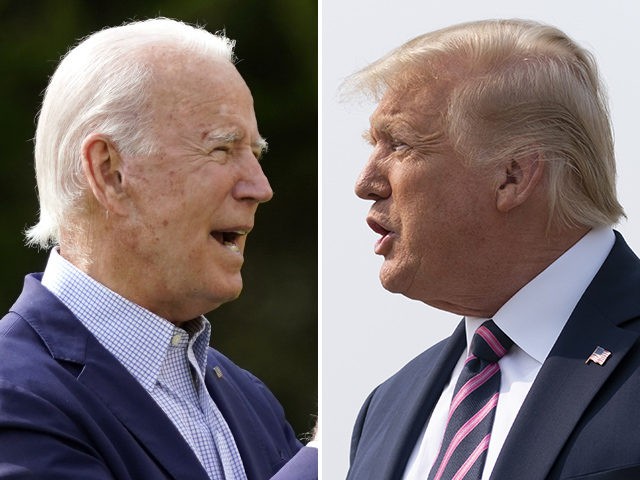President Donald Trump and Joe Biden will nearly cross paths on the campaign trail this election cycle when both travel on Friday to Minnesota, a state that has generally been safe for Democrats over the past 40 years.
Both candidates, who are eyeing Minnesota as an integral part of their Electoral College strategy, will travel to the state’s Iron Range region. Trump, who narrowly lost out on carrying Minnesota in 2016, will host a rally in Bemidji — once a timber and manufacturing center not far from the western boundary of the Iron Range. Biden, on the other hand, will visit a union training center in Duluth, a mining and export city situated on Lake Superior near the region’s eastern corridor.
The visits, although uncoordinated, mark the beginning of the state’s early voting period and signify how important of a battleground not only Minnesota, but the Iron Range as well, has become this cycle. Minnesota, much like the Iron Range, has favored Democrats at the presidential level for generations. In 2016, however, the status quo was upended. Trump came within 45,000 votes, out of nearly three million ballots cast, of becoming the first Republican to win the state since 1972.
Trump’s success was due, in part, to his ability to connect with non-college-educated white voters in areas like the Iron Range. During that race, the region’s congressional seat backed Trump over former Secretary State Hillary Clinton by doubt digits ( 54 percent-to-28 percent). The result was notable given former President Barack Obama carried the district by five percentage points (51 percent-to-46 percent) during his reelection effort just four years prior.
Since 2016, the situation has barely improved for Democrats. In 2018, Republicans flipped the region’s congressional district, despite Democrats doing exceptionally well across the state in other races, particularly those for Minnesota’s governorship and the state’s two United States Senate seats. Things do not seem to any better for the party this cycle as exhibited by the fact that a number of local Iron Range Democrats have opted to endorse Trump for reelection rather than Biden. These elected officials, mostly mayors, have cited the incumbent’s manufacturing and environmental policies as the reason for their defection.
Complicating factors for Biden and Democrats is the wave of recent riots that have racked the Minneapolis metropolitan area in the wake of the George Floyd’s death in police custody. Not only has the response by Biden and local elected officials, most notably Gov. Tim Walz (D-MN), elicited a rebuke from blue-collar voters, but there are also signs that suburban women are increasingly concerned about the impact backing Democrats this November will have on public safety in the foreseeable future.
Recent polling indicates that Trump has narrowed Biden’s lead across Minnesota to levels unseen since the onset of the novel coronavirus pandemic. A survey released by the Morning Consult this week found that Biden only leading Trump by four percentage points (48 percent-to-44 percent) among likely voters. Similarly, when broken down by community and geographic area, the poll found Biden leading Trump by the same margin (47 percent-to-43 percent) among suburban voters.
“It’s tightening up,” Ken Martin, the chair of Minnesota’s Democratic-Farmer-Labor Party, told Politico recently when discussing the 2020 race. “But I wouldn’t trade our position with theirs in a million years.”
Biden’s campaign has responded to the race narrowing earlier this month by moving up the start of its television ads in Minnesota earlier this month. Originally, the Democrat nominee’s campaign had planned to go on air in Minnesota in mid-September. The decision, however, was jettisoned after rioting and protests reemerged across the Minneapolis region in late-August following the shooting of Jacob Blake by police in neighboring Wisconsin.
Correction: An earlier version of this article stated Bemidji is a timber and manufacturing center. Although northeastern Minnesota has long been a timber-rich region, the forestry industry has been in decline, and forestry and manufacturing in Bemidji, specifically, comprise a small percentage of its workforce today. Additionally, both Bemidji and Duluth are cities just outside the Iron Range boundaries. This article has been updated accordingly.

COMMENTS
Please let us know if you're having issues with commenting.